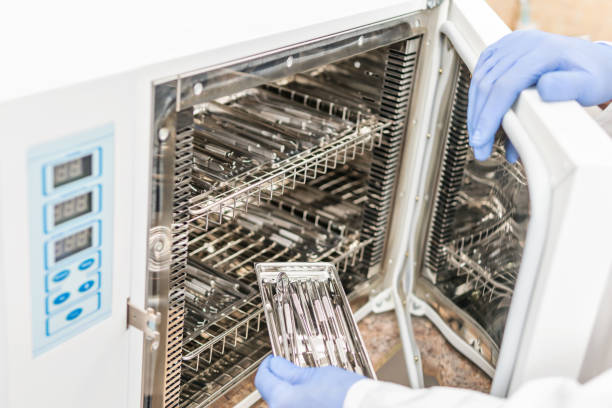Stainless Steel Application of Medical Treatment
Yaoyi can provide medical stainless steel that meets industry standards for the medical industry. Stainless Steel Application of Medical Treatment used by 0.03mm~0.05mm thick stainless steel foil, 316 stainless steel, etc. In addition, we can also deburr and cut the stainless steel coils you buy to high-precision tolerances.
We have a complete set of cold rolling, annealing, slitting, winding, cutting, trimming, packaging machines, and provide ISO 9001:2015 certification, we can provide you with high-quality products.
SUS316 is widely used in the production of Medical treatment.
SUS316L with low carbon content is widely used in the medical field because of its excellent corrosion resistance.
0.03mm~0.06mm stainless steel foil is widely used in dentistry, heart stents and other fields.
As the most widely used stainless steel grade, 304 stainless steel is usually used as a pallet material.
Medical Stainless Steel Material has low cost, good processing performance, mechanical properties, etc., and is currently widely used in stomatology, fracture internal fixation devices, artificial joints, and other fields. 302 stainless steel is the earliest medical metal material used, with good corrosion resistance and high strength. Some researchers added molybdenum to stainless steel to make 316 stainless steel, which effectively improved the corrosion resistance of medical stainless steel. In the 1950s, researchers developed a new 316L stainless steel, which reduced the highest carbon content in stainless steel to 0.03%, which further improved the corrosion resistance of the material. Since then, medical stainless steel has become the internationally recognized material of choice for surgical implants.
Medical Stainless Steel Material has the advantages of low price and easy processing. It can be made into various prostheses and various shapes, such as crowns, triangular nails, screws, intramedullary needles, plates, nails and other devices. Also, surgical instruments and medical devices can be made. The instrument is also widely used. At this stage, medical stainless steel is still the most widely used medical metal material. At present, the commonly used medical stainless steels are 316L and 317L. The mass fraction of C in stainless steel ≤0.03% can prevent it from being corroded in organisms. The main component is Fe60%~65%. The important alloys are Cr17%~20% and Ni12%~14. %, there are other minor elements such as N, Mn, Mo, P, Cl, Si, and S. In order to avoid the toxic effects of nickel, researchers have developed high-nitrogen nickel-free stainless steel.
In recent years, low-nickel and nickel-free Medical Stainless Steel Material have gradually been developed and applied. Japan’s Institute of Material and Materials has developed a simple production method for nickel-free hard stainless steel, which solves the problem that nickel-free stainless steel is difficult to process and the manufacturing cost is too high. The production cost is low and it is expected to be widely used in the medical field.
ASTM A240 Material: Applications and Classifications

Medica Stainless Steel Material can be divided into four categories according to its structure: ①Martensitic stainless steel, which is not very resistant to corrosion, but has high hardness and strength, is mostly used to make surgical instruments; ②Ferritic stainless steel is used in medicine due to performance limitations. There are few applications; ③precipitation hardening stainless steel, its corrosion resistance is equivalent to that of cobalt-based alloys, and its mechanical properties are also very good. It can replace cobalt-based alloys to make artificial joints and other load-bearing implants; Its corrosion resistance is the most commonly used medical metal material. Stainless steel represented by ultra-low carbon 316L and 317L has been widely used in the medical field.
Medical austenitic stainless steel Material is widely used to make various artificial joints and fracture internal fixation devices, such as various artificial joints, osteotomy connectors of various specifications, bone screws and skull plates, etc.; in dentistry, medical stainless steel is widely used in dental implants, orthodontics, dental root implants, and auxiliary devices, etc.; in cardiac surgery, it is used to make cardiovascular stents.
Medical stainless steel Material has become a widely used medical implant material and medical tool material due to its good biocompatibility, mechanical properties, body fluid corrosion resistance, excellent processing and forming properties, and low cost. In orthopedics, medical stainless steel is widely used to make various artificial joints and fracture internal fixation devices; in dentistry, medical stainless steel is widely used in dental implants, dental orthopedics, root implants, and auxiliary devices; in cardiology, medical Stainless steel production of cardiovascular stents, etc.
In addition, medical stainless steel is also used to process various surgical instruments and tools. Medical stainless steel is different from industrial stainless steel. It is required to maintain excellent corrosion resistance in the human body (including resistance to intergranular corrosion, stress corrosion, and other local corrosion), to prevent premature failure of implanted devices, reduce the elution of harmful metal ions, and ensure stainless steel Safety of clinical application of implanted devices. Therefore, it is necessary to use austenitic stainless steel with the best corrosion resistance as the implant material. At present, a large number of clinical applications are mainly Fe-Cr-Ni-Mo composition system 316L, 317L, and other stable austenitic structures. stainless steel material. Due to the relatively low strength and high elastic modulus of austenitic stainless steel, steel generally contains more than 10% nickel. Compared with other structural materials currently used in clinical applications, it is facing increasing challenges in clinical applications.
Everything You Need To Know:Stainless Steel Ties
References
1.Baosteel:Performance development of ferritic stainless steel for automobile exhaust pipes
2.Modern logistics news: Analysis of the automotive industry’s demand for stainless steel raw materials
3.Metal World:Application of stainless steel in car body
4.World Metals:Development and application of stainless steel for automobiles
